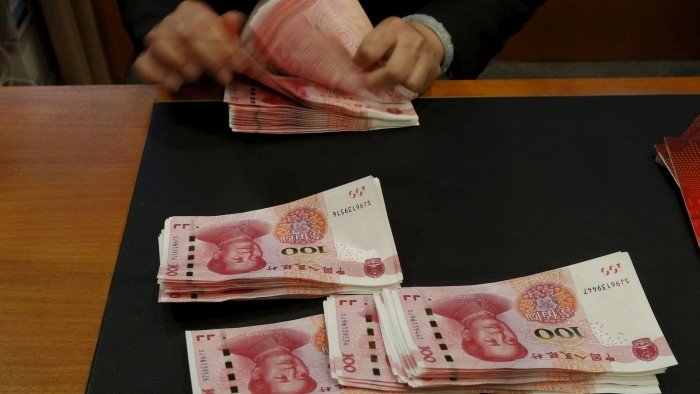The emergence of the offshore non-deliverable forward market in the rupee has made it more challenging for the RBI to maintain exchange rate stability. In this post, Datta and Sengupta explain the drivers of growth of this market and how it impacts domestic financial markets. They analyse RBI’s efforts to influence the offshore market through a proposal to allow offshore electronic trading platforms to register with the Central Bank.
Maintaining stability of the exchange rate is among the most important goals of the Reserve Bank of India (RBI). On a de-jure basis, India moved towards a market-determined exchange rate system in 1993. Yet the de-facto reality is that the RBI regularly and actively intervenes in the foreign exchange (FX) markets. The official position of the RBI is that FX interventions are made to curb excessive volatility of the exchange rate and maintain orderly conditions in the market. This task however has become progressively more challenging for the Central Bank owing to the steady rise of the offshore non-deliverable forward (NDF) market1 in the rupee (INR).
The INR-NDF market has grown substantially in size over the years. It has emerged as the second largest NDF market globally in terms of average daily turnover. In fact, the INR-NDF market is almost thrice as large as the onshore deliverable forward market. This has led to concerns in the RBI that the offshore market is playing an increasingly important role in determining the value of the rupee and hence may hamper the ability of the Central Bank to maintain exchange rate stability. This has been of concern especially because the offshore market is beyond the RBI’s legal jurisdiction.
It seems that the RBI may have finally found a way to influence this offshore market. The Central Bank recently released a draft direction proposing to allow offshore electronic trading platforms (ETPs) to register with it. If this regulatory strategy works, it could help establish the RBI’s extraterritorial reach over the offshore market in an unprecedented manner, and other emerging-market (EM) central banks could also follow suit.
Background
After World War II, the Bretton Woods Conference of 1944 led to a fixed exchange rate system under which all countries’ currencies were fixed, but adjustable, to US dollar. This system came to an end in 1971, and the world’s major currencies moved towards floating exchange rate regimes. On the other hand, emerging economies like India, gradually shifted to ‘managed floating’ regimes over the next couple of decades, wherein their central banks would intervene in the FX markets to maintain currency stability.
In an increasingly globalised world where investors, traders and other market participants regularly conduct transactions in multiple currencies, fluctuations in exchange rates expose them to currency risks – that is, they experience financial gains or losses depending on fluctuations in exchange rates. To protect themselves from such risks, they use financial instruments called currency derivatives2 such as currency forwards. These instruments help hedge their currency exposures and also help FX market participants take speculative positions in multiple currencies.
For participants undertaking transactions in EM currencies such as the rupee, there are additional layers of complication. The financial markets in these economies are underdeveloped and currency derivatives may not be available. And even if these financial products are available, foreign investors’ access to these derivative markets is limited. This is because EM policymakers occasionally impose capital controls to limit the flow of foreign money moving in and out of their economies.
Access to Indian financial markets is even more difficult than most other EMs because India is the only emerging economy, other than China, that continues to have in place a complex and elaborate framework of capital controls, despite liberalisation reforms undertaken more than three decades ago.3 Hence, despite the existence of an onshore INR forward market, capital controls and other institutional constraints such as high transaction costs, complex tax regime, etc., impede the ability of foreign participants to take positions on this market.
As a result, over the years an offshore INR-NDF market has developed at various international locations such as Singapore, Hong Kong, London, Dubai, and New York. This offshore market allows participants to avoid the stringent capital-account restrictions of India and take positions on the rupee. Given that the NDF does not require physical exchange of the underlying currency, it is ideal for hedging risks arising from currencies such as the rupee, which are not freely convertible due to capital controls.
Apart from INR, South Korean won, Brazilian real, Chinese renminbi and New Taiwan dollar also have sizable offshore NDF markets. The NDF contracts in rupees are bilaterally settled in the US dollar and are traded in the over-the-counter (OTC) market. India accounts for close to 20% of the global trade in NDFs. According to the Bank of International Settlements (BIS) Triennial Survey, 2019, the NDF volumes for the USD-INR currency pair reported a staggering three-fold increase, from around US$16.4 billion in 2016 to US$50 billion in 2019.
Domestic impact of offshore NDF market
Over the years, the linkages between the NDF market and the onshore financial markets have drawn considerable policy attention. In India’s case, there is evidence that the NDF market exerts influence on the value as well the volatility of the INR-USD exchange rate. Especially in times of heightened uncertainty and stress (such as the taper tantrum episode of 2013-14 or the 2018 emerging market crisis when the rupee depreciated substantially), the price volatility in the NDF market tends to spill over to the domestic market.
In response to this, the RBI set up the Task Force on Offshore Rupee Markets in July 2019, under the chairmanship of ex-Deputy Governor Usha Thorat, for a deeper understanding of the factors causing the sharp growth of the NDF market and to identify measures to reverse the trend. Based on the recommendations of this committee, the RBI allowed all Indian banks having an IFSC (International Financial Services Centre) Banking Unit to participate in the NDF market from June 2020 onwards. This would arguably give the RBI greater control over the NDF market.
However, in October 2022, the RBI reversed its stance and informally restricted banks from building additional positions on the NDF. This was done presumably to manage the rupee, which was rapidly depreciating against the US dollar in response to the aggressive interest rate hikes by the US Federal Reserve. In December 2022, RBI lifted these restrictions only to bring them back in August 2023 when the rupee began depreciating again. By April 2024, banks were once again allowed to take positions on the NDF market, but by then, according to news reports, banks were no longer interested due to the uncertainty arising from the RBI’s policy flip-flops.
It seems that the RBI has now proposed the latest regulations on offshore ETPs, in an attempt to once again encourage Indian banks to take positions on the NDF market.
Regulations for ETPs
One of the crucial learnings from the 2008 Global Financial Crisis was that the OTC derivatives market needs to become more transparent. This had prompted the G20 group of countries to come to an agreement in 2009 that all standardised OTC derivatives should be traded on ETPs. Since then, ETPs have been encouraged globally.
In October 2018, the RBI issued its first ETP directions providing detailed eligibility criteria, technology requirements and reporting standards for ETPs executing transactions in financial instruments regulated by the Central Bank. Thirteen ETPs run by five operators have since been authorised under these directions. On 8 February 2024, the RBI’s statement on developmental and regulatory policies highlighted some new developments in this space:
“Over the last few years, there has been increased integration of the onshore forex market with offshore markets, notable developments in the technology landscape and an increase in product diversity. Market makers have also made requests to access offshore ETPs offering permitted Indian Rupee (INR) products. In view of these developments, it has been decided to review the regulatory framework for ETPs. The revised regulatory framework will be issued separately for public feedback.”
On 29 April 2024, RBI released a draft Master Direction on ETP for public feedback. This draft adds a new concept, namely, ‘offshore ETP’. Such an ETP is operated from outside India by an operator incorporated outside India. Operators of offshore ETPs need to apply for registration with RBI only if they are desirous of providing resident Indians access to their platform for transactions with non-residents in eligible derivative instruments involving rupee or rupee interest rate, as permitted by RBI under the Foreign Exchange Management Act (FEMA). This implies that, effectively, only registered offshore ETPs can allow residents to transact with non-residents in INR-NDF contracts, albeit on the assumption that residents (other than banks) are also prima facie permitted to enter into such transactions on a cross-border basis.
Legality of extraterritorial operation
A unique feature of RBI’s proposed regulation on offshore ETPs is its extraterritorial nature, that is, its effect beyond the territory of India. It may be worthwhile to note here that Article 245(2) of the Indian Constitution categorically states:
“No law made by Parliament shall be deemed to be invalid on the ground that it would have extraterritorial operation.”
The RBI Act, 1934 is a parliamentary legislation. Section 45W of this legislation empowers RBI to give directions to any agency dealing in derivatives4 as long as the same is “in public interest or to regulate the financial system of the country to its advantage”. The RBI proposes to issue the new directions for registration of offshore ETPs under this provision. However, section 1(2) of the RBI Act, 1934 explicitly states that the RBI Act “extends to the whole of India”, thus potentially implying that it does not extend beyond India. The legal implications of this particular provision on RBI’s proposed directions on offshore ETPs merit a brief discussion.
A similar provision exists in section 1(2) of the SEBI Act, 1992. The Supreme Court in SEBI vs. Pan Asia Advisors, however, upheld SEBI’s powers to initiate proceedings even when the underlying acts or transactions took place outside India as long as they have an effect on the interest of investors in India. This legal position is supported by the constitution bench decision in GVK Industries Ltd. vs. Income Tax Officer, which held that the parliament is empowered to make laws with respect to extraterritorial aspects or causes that may have an impact on or nexus with India.
The underlying legal principle is often referred to as the “effects doctrine”. Following the same doctrine, it could be argued that the proposed RBI directions requiring registration of offshore ETPs are within the scope of the RBI Act, 1934 since such offshore ETPs are envisaged to permit Indian residents to enter into INR-NDF contracts offshore. This in turn will have an effect on the INR-USD exchange rate and consequently, the RBI’s attempt to stabilise the exchange rate. Therefore, the extraterritorial operation of RBI’s proposed intervention could be legally justified under Indian laws.
Potential impact
Offshore ETPs as well as the RBI are likely to benefit from this new regulation. Offshore ETP operators interested in the INR-NDF market have strong commercial reasons to apply for an RBI registration under this proposed direction. This is because Indian banks and other Indian entities can potentially become important players in the INR-NDF market. Till date, their participation in the NDF market was limited due to the lack of a comprehensive regulatory framework. The RBI is clearly trying to fix this lacuna. Hence this should make offshore ETP operators keen to offer their NDF products to Indian banks, which are all major potential clients in this space.
From the RBI’s side, the more offshore ETP operators register with the Central Bank, the more leverage RBI will have on the NDF market. RBI is likely to exert its extraterritorial influence on this market by modulating Indian banks’ access. This will effectively enhance the RBI’s influence over the INR exchange rate in the NDF markets.
For this strategy to yield results, RBI has to be cautious that its regulatory approach is predictable and consistent. If it arbitrarily keeps cutting out Indian banks’ access to this market, like it did over the last few years, these banks will once again stop building positions on the offshore NDF market. That would ultimately limit their influence in this market, which in turn would also limit RBI’s own extraterritorial influence.
Conclusion
A large offshore INR-NDF market has developed over the years largely owing to capital controls imposed by the RBI on onshore currency and financial markets. Yet the existence of this offshore market has made it more challenging for the RBI to manage the INR-USD exchange rate. The RBI has been trying to get a hold on the NDF market, albeit with little success. So now, in order to deal with the problems created largely by its own capital controls, and given its objective of exchange rate management, the RBI has issued directions to register offshore ETPs. This latest attempt may be more successful than the previous ones at getting a foot in the door because the commercial incentives of offshore ETPs are aligned with the RBI’s objectives – to increase the participation of domestic Indian banks in the NDF market.
If this strategy works, other EM central banks may follow suit. How this may impact the NDF market in the long run is difficult to predict at this point in time. At an extreme, extraterritorial application of rigid local laws of EMs with capital controls may end up shifting the focus of the NDF market from registered ETPs to unregistered ETPs. EM policymakers such as in India should instead take proactive steps to liberalise their onshore currency derivative markets, if they want to curb the influence of the NDF market on exchange rates.
I4I is now on Substack. Please click here (@Ideas for India) to subscribe to our channel for quick updates on our content.
Notes:
- An NDF contract is similar to a regular forward currency contract (which sets a fixed foreign currency exchange rate for a transaction at a future date), with the main difference that an NDF does not require physical exchange of the underlying currency. Instead, it allows the counterparties to settle profit or loss in a convertible currency like the US dollar. Hence, the moniker “non-deliverable”.
- Currency derivatives are contracts in which a specified amount of a particular currency pair is traded on a specified date in the future.
- See for example, Aggarwal et al. (2021), Pandey et al. (2019), Sengupta and Sen Gupta (2014), among others, for a description of India’s capital controls regime.
- The definition of ‘derivative’ includes an instrument, to be settled at a future date, whose value is derived from change in interest rate, foreign exchange rate, etc.
Further Reading
- Aggarwal, N, S Arora and R Sengupta (2022), ‘Capital account openness in India and a comparison with China: Then versus now’, Indira Gandhi Institute of Development Research, Mumbai Working Papers 2022-005.
- Behera, Harendra, Rajiv Ranjan and Sajjid Chinoy (2022), “Does offshore NDF market influence onshore forex market? Evidence from India”, Journal of Futures Markets, 42(6): 1167-1185. Available here.
- Pandey, R, R Sengupta, A Shah and B Zaveri (2019), ‘Evolution of capital controls on foreign institutional investment in India’, Indira Gandhi Institute of Development Research, Mumbai Working Papers2019-034.
- Sengupta, R and A Sen Gupta (2015), ‘Policy tradeoffs in an open economy and the role of G-20 in global macroeconomic policy coordination’, Indira Gandhi Institute of Development Research, Mumbai Working Papers2015-024.







